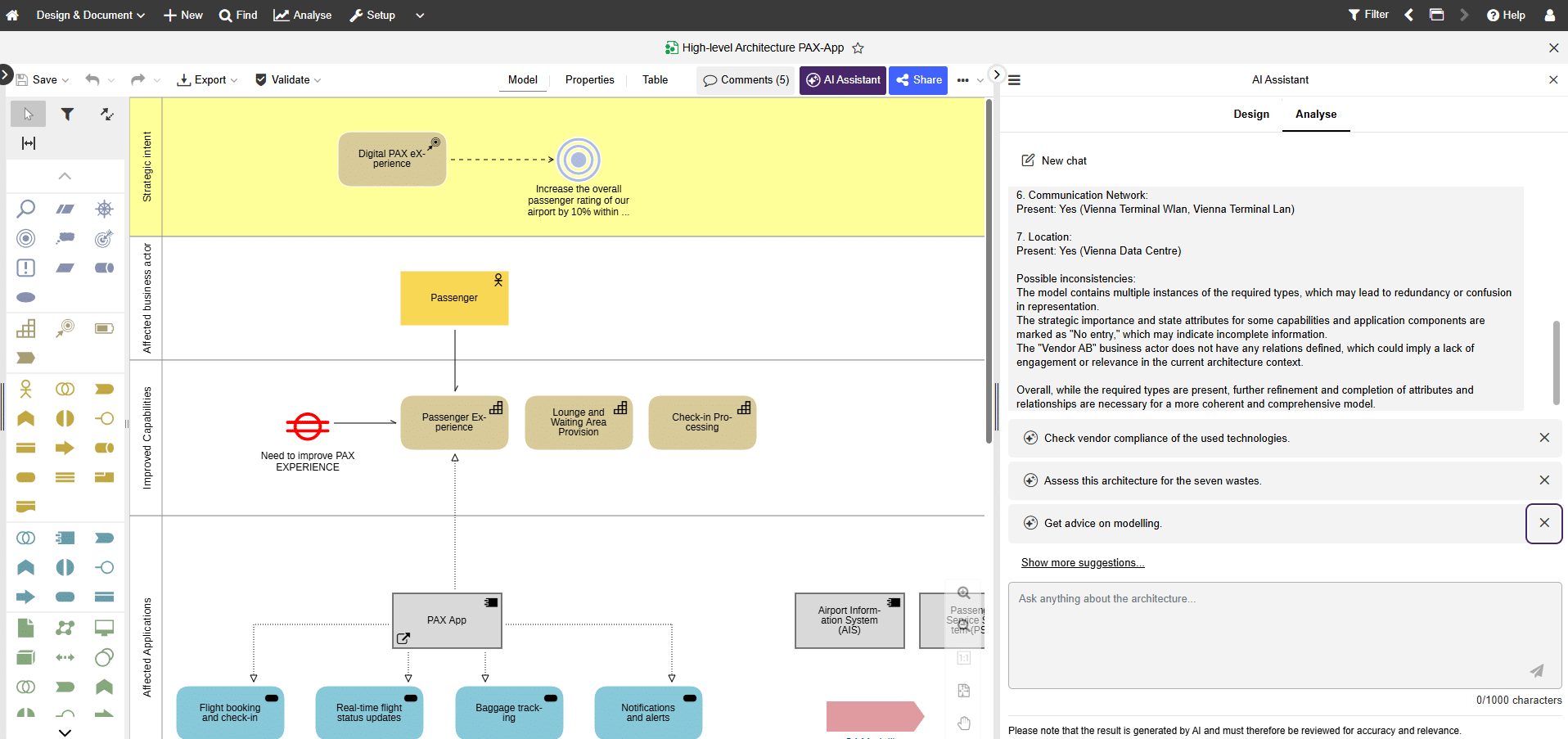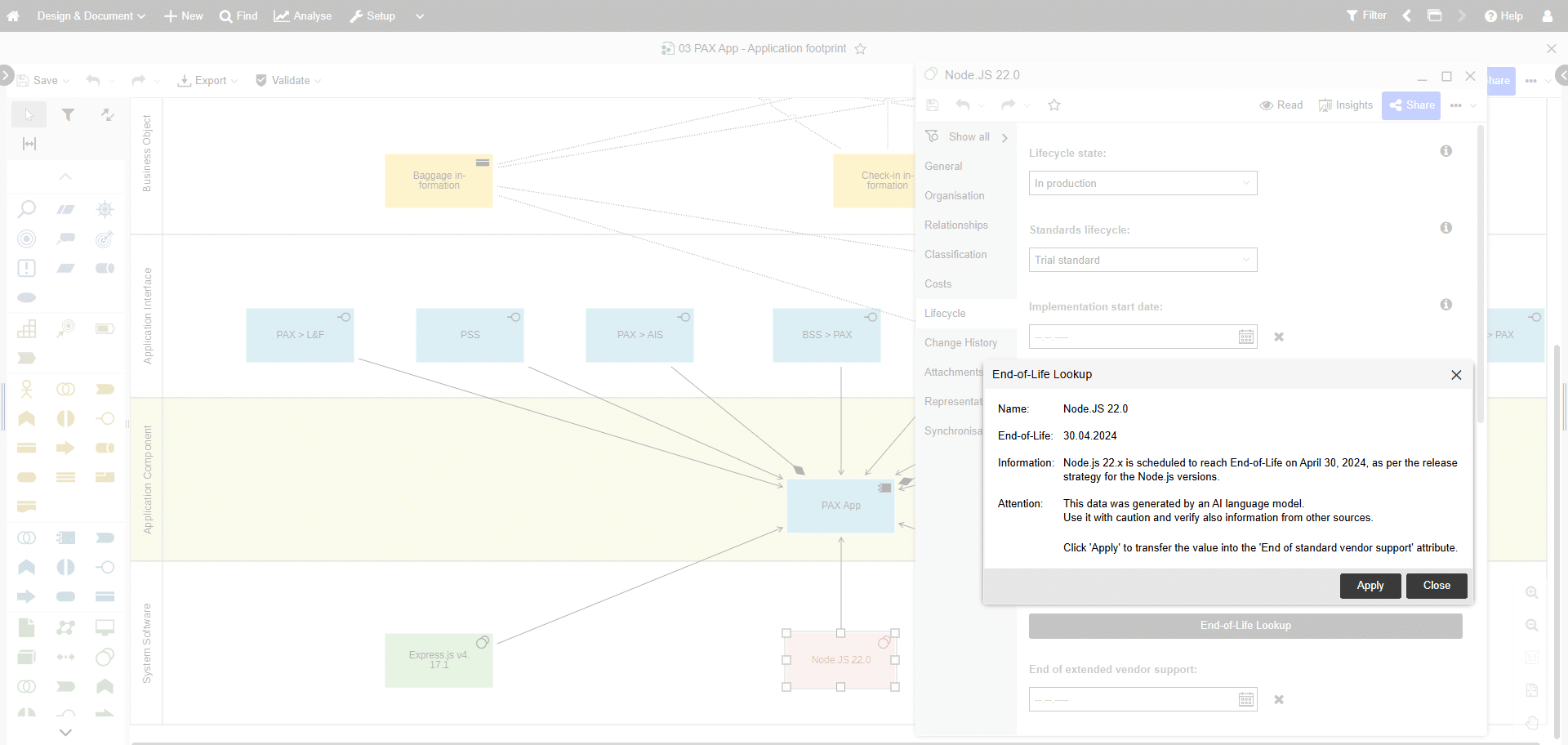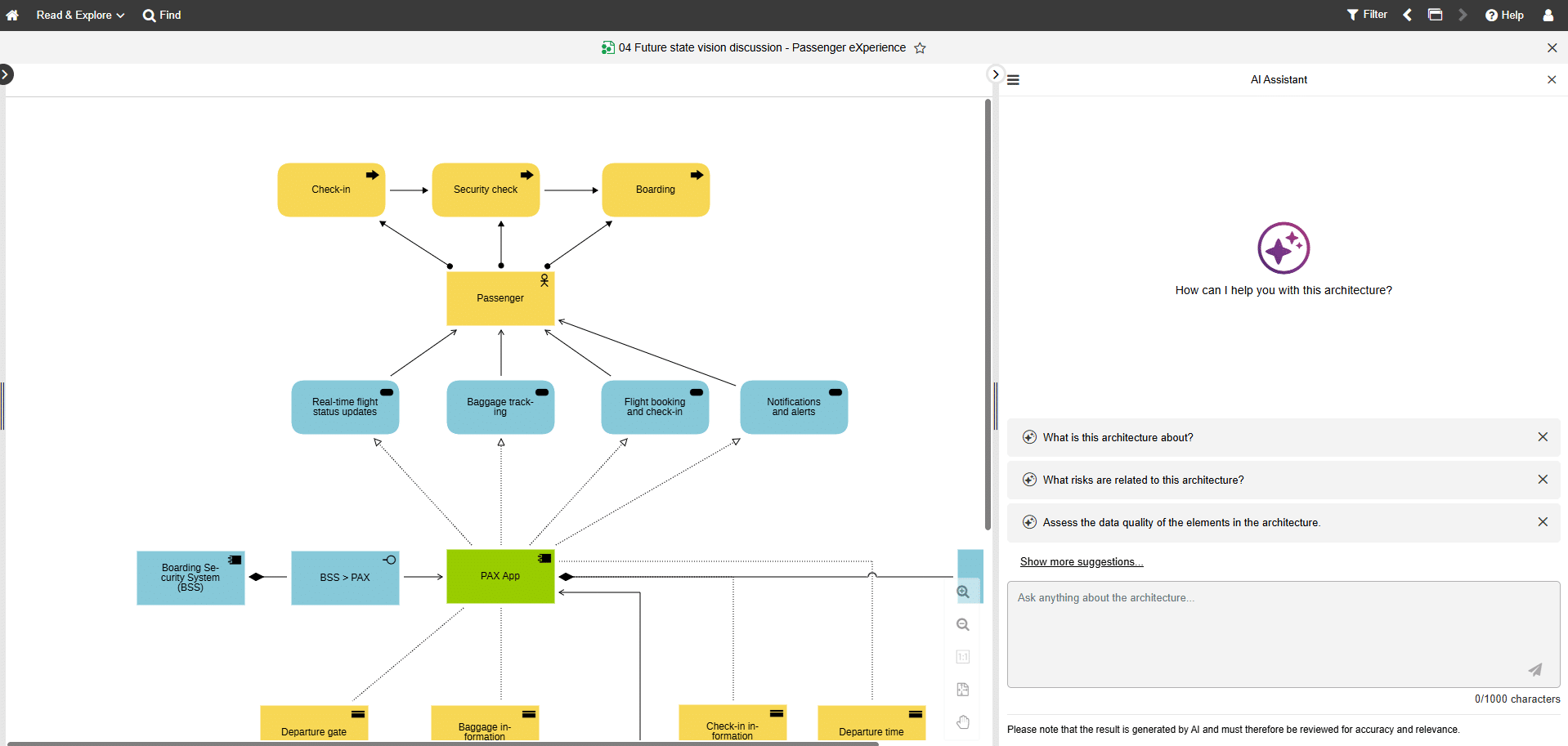Found this helpful? Share it with peers.
Introduction: From Frameworks to Intelligence
Enterprise Architecture is in transition. What began as a discipline focused on modelling frameworks and documentation is now moving toward dynamic, real-time decision support. AI is not just helping teams work faster – it’s opening the door to entirely new ways of thinking about architecture.
From the rise of large language models to the growing availability of contextual data, Enterprise Architecture is poised for its next evolution. Architects are no longer just mapping systems; they’re being asked to advise on strategy, steer investment, and continuously align IT with business priorities – all in environments that shift faster than ever.
AI can help carry that weight. It’s already helping architects model faster, analyse more deeply, and remove friction from daily work. But more than that, AI has the potential to reshape the discipline itself – augmenting expertise, guiding decisions, and transforming how architecture is practiced at scale.
Why AI Matters for the Future of EA
Enterprise architects have always served as the connective tissue between business strategy and IT execution. But today, that role is under immense pressure. Architects are expected to respond quickly, manage vast portfolios, and deliver insights that guide long-term change – all while grappling with fragmented tools and constant information overload.
To understand where AI can have the most impact, it’s important to look at the core challenges architects face today – challenges that are redefining what the discipline demands.
Complexity:
A typical enterprise landscape involves hundreds of interconnected systems, applications, and data flows. Spotting redundancies, dependencies, or weak links across that landscape is difficult for a human, but AI thrives on that scale. Tools infused with machine intelligence can surface inefficiencies, uncover relationships, and detect change signals far earlier than traditional methods.
Silos:
Architecture knowledge is often siloed. Teams operate in disconnected domains, with separate tools, spreadsheets, and workflows. Connecting those dots manually is tedious and expensive. AI can semantically interpret and link data across sources, helping break down silos and deliver a more complete architectural picture.
Information Overload:
Architects are constantly reacting to change requests, incidents, strategic shifts, and technology updates. AI co-pilots cut through the noise, highlight what really matters, and guide the next best action – making the job more focused, not more frantic.
These challenges demand more than faster modelling. They require a reimagined EA practice, one where AI becomes an embedded partner in architectural thinking.
What AI Could Enable for Enterprise Architecture
AI has the potential to fundamentally rewire how architects work and what architecture can achieve. The following scenarios showcase how AI could shape the next era of Enterprise Architecture – not as distant futures, but as plausible extensions of where the discipline is already heading.
1. Portfolio Intelligence
Imagine intelligent agents continuously monitoring your application landscape. They don’t just detect systems with functional overlap – they assess usage trends, cost performance, and strategic fit. Based on this data, they propose candidates for consolidation, complete with cost-saving projections and risk trade-offs. Architecture becomes less about static inventory management and more about dynamic, AI-curated optimization.
Hint: Read more about AI-powered Application Portfolio Management.
2. Roadmap Co-Creation
Instead of starting with a blank canvas, architects receive draft transformation plans automatically generated by AI. These roadmaps link capabilities to enabling applications, align with business objectives, and simulate potential impact. Architects still validate and refine, but the heavy-lifting of discovery, scoping, and alignment is already done, accelerating planning and strengthening execution.
3. Proactive Lifecycle Management
AI could actively scan technology lifecycles, flagging components nearing end-of-life based on vendor roadmaps, support policies, and industry signals. It could suggest replacements or mitigation strategies that align with your architecture, helping you modernize before risks materialize – and do so strategically, not reactively.
4. Natural Language Insight Delivery
Conversational AI opens architecture to the rest of the organization. Anyone, from a delivery lead to a business analyst, could ask, “Which applications support our onboarding process?” and receive an instant, visual, and data-backed answer. No need for tool training or diagram navigation. EA becomes approachable and usable for everyone.
5. Design Intelligence
Model validation could go far beyond rule checks. AI could analyse your design against organizational patterns, reuse existing structures where relevant, and flag inconsistencies across teams or layers. This type of assistance helps architects design more coherently and upskill faster – particularly in large, distributed organizations.
Where We Are Today: Laying the Groundwork with ADOIT
While the full potential of AI in EA is still unfolding, ADOIT is already delivering tangible value – embedding smart features that enhance how architecture is modelled, maintained, and used.
End-of-Life Automation
ADOIT provides an AI-based lookup to surface end-of-life technologies automatically. It eliminates the need for time-consuming manual checks and allows teams to act early, reducing technical risk and improving portfolio hygiene.
AI-based EOL lookup
Smart Roadmapping Support
In the roadmapping workspace, ADOIT suggests relevant requirements based on architecture data, goals, and known gaps. These suggestions provide a contextual head start for planning – helping teams move from intention to strategy more efficiently.
Roadmapping workspace in ADOIT – AI-proposed requirements
Context-Aware Modelling Assistance
ADOIT provides intelligent modelling suggestions based on your organization’s meta model and modelling rules. As users create or extend diagrams, the tool recommends valid elements and connections – helping teams build consistent, complete models more efficiently and with fewer errors.
Conversational Repository Access
ADOIT’s AI assistant allows users to query the architecture repository in natural language. Whether it’s a business stakeholder or an architect, everyone can access critical insights without navigating through complex model structures.
AI-based chatbot
Pattern-Based Validation and Guidance
AI continuously checks models for alignment with best practices and design consistency. It highlights where attention is needed and helps maintain quality as architectural content grows.

AI-based modelling advice for an architecture view
What This Means for EA Teams and the Discipline
For architects, these developments mean spending less time on repetitive tasks and more time engaging with stakeholders and strategy. AI doesn’t replace architectural judgment – it amplifies it, offering new ways to explore, validate, and communicate ideas.
For CIOs and IT leaders, AI brings clarity. It enables faster, more confident decisions grounded in reliable, real-time insights from across the enterprise.
And for business stakeholders, AI lowers the barrier to entry. It makes architecture more usable, more accessible, and more directly connected to the questions they care about – turning EA into a tool for everyday collaboration, not just long-term planning.
More broadly, AI transforms EA from a support function to a strategic driver. It helps architecture scale, not by increasing headcount, but by embedding intelligence into the practice itself.
Conclusion: EA Is Becoming Smarter – and So Must We
AI is not just a feature set. It’s a shift in how Enterprise Architecture works, and what it can deliver.
As intelligent capabilities become more embedded in our tools, our models, and our day-to-day workflows, the role of the architect will evolve. Less about drawing static blueprints. More about navigating change in real time. Less about controlling complexity manually. More about designing adaptive systems guided by live intelligence.
Platforms like ADOIT are already enabling this shift, supporting today’s needs while preparing for what’s next. And what’s next is big.
Want to learn how EA can help your organization scale AI itself? Explore that perspective here.
Ready to take the next step? Explore ADOIT’s AI-powered features or try out our free ADOIT:Community Edition.









